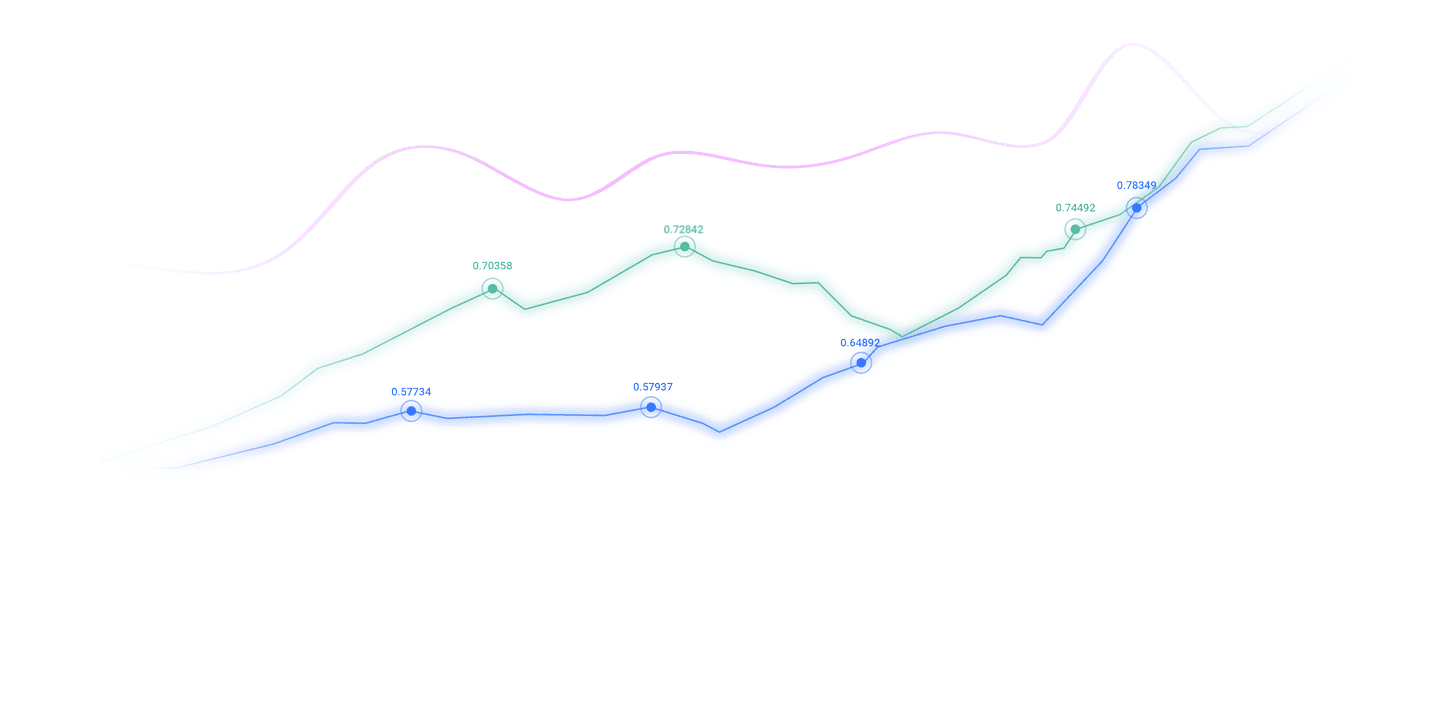Trusted by over 15 Million Traders
The Most Awarded Broker
for a Reason
CATEGORIES
News
- Trump casts a "bigger net" for Powell's successor, inflation data boosts Fed's b
- The US dollar stabilizes above the 98 mark, and the news of miserable tariffs tr
- PMI plummeted and employment "exploded", Goldman Sachs Moody's collective voice,
- Gold is now priced at 3367 in the morning session and is directly short!
- Improved trade prospects bring positive benefits, analysis of short-term trends
market analysis
Interpretation of the Federal Reserve’s insistence on cutting interest rates in a “data vacuum”
Wonderful introduction:
One person’s happiness may be fake, but the happiness of a group of people can no longer distinguish between true and false. They squandered their youth to their heart's content, wishing they could burn it all away. Their posture was like a carnival before the end of the world.
Hello everyone, today XM Forex will bring you "[XM Foreign Exchange Market Analysis]: Interpretation of the Federal Reserve's insistence on cutting interest rates in the "data vacuum"". Hope this helps you! The original content is as follows:
Federal Reserve Chairman Jerome Powell reiterates at almost every press conference that "we rely on data to make decisions." This is the so-called core creed of the Federal Reserve. The key message it conveys is that the Federal Open Market www.xmhouses.committee (FOMC) will not follow a preset path, but will finalize decisions one by one based on the latest economic data from various official channels. But what is the reality? This article reveals some clues that the Fed seems to be increasingly moving away from data as a basis for decision-making.
The Fed's "data dependence" creed is out of touch with reality
At the National Association of Business Economics conference in Philadelphia on October 14, Powell made it clear that even if the current federal government shutdown has entered its fourth week and has caused interruptions in the release of official data, the Fed will still advance decision-making.
Even Friday’s multi-day delayed September inflation data report - which showed an acceleration in overall annual inflation - will not prevent the Federal Reserve from cutting the federal funds rate again on Thursday.
Dismantling of September inflation data: surface cooling, core heating up
U.S. core inflation data in September finally recorded a level slightly lower than almost all market expectations. The dominant driver of this slowdown in inflation www.xmhouses.comes from housing costs, and there is currently little evidence that tariff costs have been transmitted to core www.xmhouses.commodity prices.
But it should be noted that under the surface, the prices of core services are on the rise, that is, the prices of core food and services are all on the rise.
As can be seen in the figure below, rent and equivalent rent, with weights of 7.5% and 26.2%, fell by 0.1% and 0.2% respectively, while core services fell from 3.6 to 3.5, only falling by 0.1. It means that the overall core service CPI is eliminatedRents overall are rising.
(Overview of U.S. CPI sub-data in September)
The Federal Reserve has changed from "data-driven" to "market follower"
In short, the Federal Reserve seems to have made up its mind to continue to loosen monetary policy, and the data has become useless.
The market's expectations for further interest rate cuts are almost unanimous, which leaves the Federal Reserve with only one feasible path: to cut interest rates to meet market expectations.
If the Fed remains on hold, it could trigger investor panic, causing the stock market to plummet and Treasury yields to soar—and may even trigger the financial crisis that the Fed was trying to avert.
Today’s Fed is no longer the market leader, but just a market follower.
Hidden concerns of the crisis: High-yield bond rifts and banking system liquidity risks
Where may the next crisis www.xmhouses.come from? The most likely trigger may be the high-yield bond market: even as credit continues to be loose in recent months, credit spreads in this market have been unusually narrow.
Recently, auto parts manufacturer First Brands and subprime lender Tricolor went bankrupt one after another. Although these events did not have systemic risk implications, they exposed the cracks beneath the surface of the market. And how deep are these cracks?
The banking system is another weak link. Bank reserves are no longer considered "adequate" - an official statement from the Federal Reserve that signals a looming crisis of funding shortages.
Considering that the credit environment has been significantly loosened since September 2019, the severity of this funding shortage crisis may exceed the liquidity crunch that year.
The liquidity crunch in 2019 prompted the Federal Reserve to terminate the process of shrinking its balance sheet and start expanding its balance sheet again.
QT may be terminated early, with the hidden danger of balance sheet expansion
Perhaps for this reason, Powell hinted at the end of quantitative tightening (QT) in his speech in Philadelphia - even though the current size of the Fed's balance sheet, both in absolute terms and as a proportion of gross domestic product (GDP), has exceeded pre-COVID-19 levels.
There is no need to be surprised if the Fed announces the termination of QT when the two-day FOMC meeting ends next week.
What are the problems with such a move? As we have witnessed since September 2008, every time a crisis breaks out, the Fed's weight in the economy continues to rise.
The quantitative easing (QE) policy launched by former Federal Reserve Chairman Ben Bernanke in late 2008 was initially defined as a "temporary" measure, but eventually evolved into a "behemoth."
In 2008, the Fed held only US$780 billion in national debt, accounting for 12% of the outstanding national debt; by 2014, it increased to US$2.47 trillion, accounting for 17%.
As of 2023, the Federal Reserve still holds US$4.92 trillion in treasury bonds, accounting for 61.65% of its total assets.The “largest single holder” of debt.
Today, the size of the Federal Reserve’s balance sheet has expanded to more than 8 times its initial size! In essence, the Fed positions itself as the solver for all problems, whether monetary or structural, and the solution to each crisis lays the foundation for the next.
This kind of bureaucratic overreach may become a tool for Washington’s power game, but it has little effect on maintaining market stability.
Such moves would also divert the Fed from the only goal it should be focused on - maintaining low and stable inflation. Ultimately, all goals may not achieve the desired results.
Trading summary:
The current U.S. dollar index is being suppressed by the misalignment of the Federal Reserve's policy logic. The core is due to two major factors: First, deviating from the data and forcing easing (rate cut + or terminating QT), directly narrowing the interest rate gap between the United States and Europe, weakening the support of the U.S. dollar interest rate difference, and the rising expectations of QT termination further releasing signals of liquidity easing.
The second is that the Federal Reserve has been reduced from "data dependence" to "market follower". Its policy independence has been damaged, the credit premium of the US dollar has been weakened, and global capital's trust in it has declined.
In the short term, the index has priced in easing expectations in advance. If the FOMC decision is implemented this week, it is likely to continue to fluctuate downward and approach the 98 key support. Although risks such as high-yield bond defaults and bank liquidity shortages are theoretically possible for hedging and boosting, the market is more concerned about the underpinning effect of easing on assets, forcing the dollar to rebound to a limited extent.
Technical analysis:
The U.S. dollar index has not reached a new high for 10 trading days. At the same time, it has closed below the previous key neckline for 4 consecutive days. In addition, the short-term upward trend line of the U.S. dollar index is about to fall below, all suggesting that the U.S. dollar index may be weakening and this rebound may end at any time.
The same point of view is followed in the technical analysis of the previous article. Before the US dollar index rises above 99.36, a rebound will be considered. Since it is a rebound, it will eventually continue to find the bottom in the original direction.
The pressure level of the U.S. dollar index is the orange neckline and 99.36, and the support level is the upward trend line and 98.61 and 97.55 in the distance.
The above content is all about "[XM Foreign Exchange Market Analysis]: Interpretation of the Federal Reserve's determination to cut interest rates in the "data vacuum"". It was carefully www.xmhouses.compiled and edited by the editor of XM Foreign Exchange. I hope it will be helpful to your trading! Thanks for the support!
Due to the author's limited ability and time constraints, some contents in the article still need to be discussed and studied in depth. Therefore, in the future, the author will conduct extended research and discussion on the following issues:
Disclaimers: XM Group only provides execution services and access permissions for online trading platforms, and allows individuals to view and/or use the website or the content provided on the website, but has no intention of making any changes or extensions, nor will it change or extend its services and access permissions. All access and usage permissions will be subject to the following terms and conditions: (i) Terms and conditions; (ii) Risk warning; And (iii) a complete disclaimer. Please note that all information provided on the website is for general informational purposes only. In addition, the content of all XM online trading platforms does not constitute, and cannot be used for any unauthorized financial market trading invitations and/or invitations. Financial market transactions pose significant risks to your investment capital.
All materials published on online trading platforms are only intended for educational/informational purposes and do not include or should be considered for financial, investment tax, or trading related consulting and advice, or transaction price records, or any financial product or non invitation related trading offers or invitations.
All content provided by XM and third-party suppliers on this website, including opinions, news, research, analysis, prices, other information, and third-party website links, remains unchanged and is provided as general market commentary rather than investment advice. All materials published on online trading platforms are only for educational/informational purposes and do not include or should be considered as applicable to financial, investment tax, or trading related advice and recommendations, or transaction price records, or any financial product or non invitation related financial offers or invitations. Please ensure that you have read and fully understood the information on XM's non independent investment research tips and risk warnings. For more details, please click here


































































































